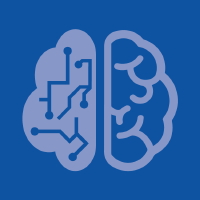Topic Editors


Advances in Integrative AI, Machine Learning, and Big Data for Transformative Applications
Topic Information
Dear Colleagues,
In recent years, Artificial Intelligence (AI), Machine Learning (ML), and Big Data have emerged as pivotal technologies driving innovation across a myriad of disciplines. These technologies have revolutionized fields such as engineering, healthcare, environmental science, and beyond, fundamentally reshaping how we approach complex problems and generate insights from vast datasets. This Special Issue aims to showcase the significant impact of AI, ML, and Big Data by exploring their transformative applications. It invites researchers and practitioners to contribute original research and reviews that highlight innovative methodologies and practical implementations in leveraging these technologies. Submissions are encouraged to address challenges and opportunities in integrating AI, ML, and Big Data across diverse domains, fostering interdisciplinary collaboration and pushing the boundaries of technological advancement. Topics of interest include, but are not limited to:
- Integrative approaches using AI and ML in engineering, materials science, healthcare, environmental monitoring, and remote sensing.
- AI-driven analytics and predictive modeling for optimized decision-making and resource management.
- Innovations in ML algorithms for real-time data processing and pattern recognition.
- Applications of Big Data in addressing societal challenges and advancing global sustainability efforts. By exploring these topics, this topic aims to provide insights into the transformative potential of AI, ML, and Big Data, catalyzing further advancements and applications across various sectors.
Dr. Peiying Zhang
Prof. Dr. Athanasios V. Vasilakos
Topic Editors
Keywords
- artificial intelligence (AI)
- machine learning (ML)
- big data
- data-driven analytics
- predictive modeling
- algorithm
Participating Journals
| Journal Name | Impact Factor | CiteScore | Launched Year | First Decision (median) | APC | |
|---|---|---|---|---|---|---|

Applied Sciences
|
2.5 | 5.3 | 2011 | 18.4 Days | CHF 2400 | Submit |

Electronics
|
2.6 | 5.3 | 2012 | 16.4 Days | CHF 2400 | Submit |

Information
|
2.4 | 6.9 | 2010 | 16.4 Days | CHF 1600 | Submit |

Drones
|
4.4 | 5.6 | 2017 | 19.2 Days | CHF 2600 | Submit |

Sensors
|
3.4 | 7.3 | 2001 | 18.6 Days | CHF 2600 | Submit |

Big Data and Cognitive Computing
|
3.7 | 7.1 | 2017 | 25.3 Days | CHF 1800 | Submit |

MDPI Topics is cooperating with Preprints.org and has built a direct connection between MDPI journals and Preprints.org. Authors are encouraged to enjoy the benefits by posting a preprint at Preprints.org prior to publication:
- Immediately share your ideas ahead of publication and establish your research priority;
- Protect your idea from being stolen with this time-stamped preprint article;
- Enhance the exposure and impact of your research;
- Receive feedback from your peers in advance;
- Have it indexed in Web of Science (Preprint Citation Index), Google Scholar, Crossref, SHARE, PrePubMed, Scilit and Europe PMC.

